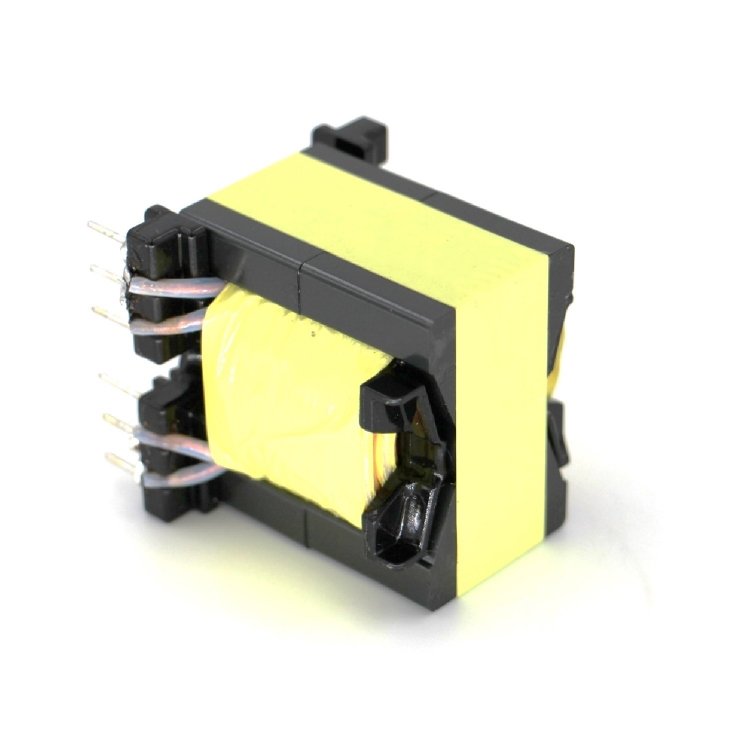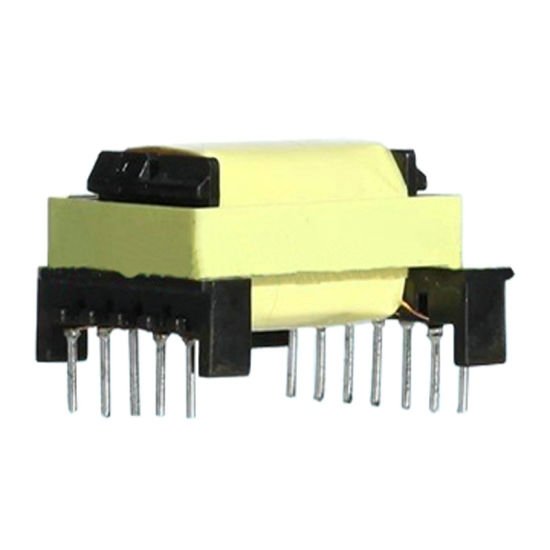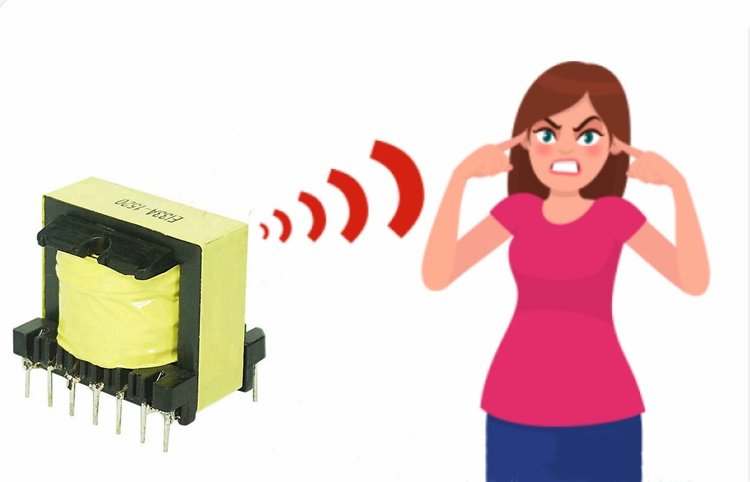High-frequency transformers play a crucial role in the operation of a wide range of electrical systems. They are responsible for converting electrical energy between different voltage levels and frequencies, enabling efficient power transmission and distribution. We will explore the principles behind high-frequency transformers in this blog, their importance in various electrical applications, and the types of high-frequency transformers commonly used today.
However, high-frequency transformers are not without their challenges. One major issue is the noise they generate. Noise from high-frequency transformers can disrupt the performance of electrical systems, create interference, and even cause health concerns. In this blog, we will also examine the noise issue associated with high-frequency transformers, the sources of noise in these devices, and effective strategies for minimizing noise.
What is high-frequency transformer noise and why is it a concern?
High-frequency transformer noise refers to the unwanted sound generated by the transformer during its operation. This noise can be caused by various factors such as the vibration of transformer components, the movement of magnetic fields, or the flow of electric current through the transformer’s windings.
The concern about high-frequency transformer noise is that it can disrupt the performance of electrical systems, create interference, and even cause health concerns for individuals working in close proximity to the transformer. Additionally, high-frequency transformer noise can be an indication of inefficiencies or design flaws in the transformer, which can lead to reduced performance and reliability. Therefore, minimizing high-frequency transformer noise is an important consideration in the design and operation of electrical systems.
What are the main sources of noise in high-frequency transformers?
The main sources of noise in high-frequency transformers can be classified into three categories:
- Magnetostriction: Magnetostriction is a phenomenon where a magnetic material changes its shape or size when it is subjected to a magnetic field. In high-frequency transformers, the alternating magnetic fields cause the transformer core to vibrate, which produces an audible noise.
- Eddy currents: Eddy currents are induced currents that flow in the conducting material of the transformer core due to the changing magnetic fields. These currents can cause heating and vibration of the core material, leading to noise generation.
- Mechanical vibrations: Mechanical vibrations can be caused by the transformer’s winding, structure, or cooling system. The transformer windings can vibrate due to the electromagnetic forces generated by the alternating currents. The structure of the transformer can also vibrate due to magnetic forces between the windings and the core. Additionally, the cooling system can cause vibrations due to the flow of fluid or air through the system.

How is the noise generated by a high-frequency transformer?
The noise generated in a high-frequency transformer is primarily caused by magnetostriction and electromagnetic forces.
Magnetostriction is a phenomenon where the magnetic properties of a material cause it to change shape or size in response to a magnetic field. In high-frequency transformers, the alternating magnetic fields that are produced by the flow of current through the transformer’s windings cause the transformer core to vibrate. This vibration can produce an audible noise that is proportional to the intensity of the magnetic field and the core’s material properties.
Electromagnetic forces also contribute to noise generation in high-frequency transformers. The alternating currents that flow through the transformer’s windings create magnetic fields that interact with each other and with the core material, causing mechanical stresses and vibrations that can produce noise.
How does the design of a high-frequency transformer affect the amount of noise it generates?
The design of a high-frequency transformer can have a significant impact on the amount of noise it generates. Here are some of the key design factors that can affect noise generation:
- Core material: The choice of core material can greatly influence the amount of noise generated by a high-frequency transformer. Materials with low magnetostrictive properties, such as amorphous metal or nanocrystalline alloys, can significantly reduce noise levels.
- Winding configuration: The winding configuration can affect the magnitude and distribution of the electromagnetic forces generated by the transformer. Proper winding techniques, such as interleaving the windings or using bifilar windings, can reduce the magnitude of these forces and minimize noise generation.
- Bobbin and coil form material: The material and shape of the bobbin and coil form can affect the transformer’s mechanical stability and reduce vibration-induced noise. Rigid and stable materials such as phenolic resin, polyester or polycarbonate are often used for this purpose.
- Shielding and grounding: Proper shielding and grounding techniques can reduce the impact of electromagnetic interference (EMI) and noise generated by the transformer. This can include using shielded cables and properly grounding the transformer and its components.
- Cooling system: The cooling system can also affect the amount of noise generated by a high-frequency transformer. The use of a cooling system that employs silent fans or liquid cooling can significantly reduce noise levels.
What are some common techniques used to reduce high-frequency transformer noise?
High-frequency transformer noise can be reduced by using a variety of techniques, including:
- Increase the Core Size: Transformer noise is often caused by the magnetic flux in the core. Increasing the core size can reduce the magnetic flux density and decrease noise.
- Use Laminated Steel Core: Laminated steel core with thinner layers reduces the core losses, and thus, the noise.
- Use Winding Separation: Separating the primary and secondary windings can reduce the noise that is caused by inter-winding capacitance.
- Increase the Number of Turns: Increasing the number of turns in the transformer winding can reduce the voltage stress on the insulation, and hence, the noise.
- Use Magnetic Shielding: Adding a magnetic shield around the transformer can reduce magnetic flux leakage, which in turn can reduce noise.
- Reduce the Operating Frequency: Operating at a lower frequency reduces the magnetic flux density, which can reduce noise.
- Use Damping Material: Applying damping material such as epoxy or rubber to the transformer core can reduce the vibration caused by the magnetic flux and, therefore, the noise.
- Reduce the Air Gap: A smaller air gap in the core reduces the magnetic flux density and reduces noise.
- Proper Grounding: Proper grounding of the transformer can reduce the noise caused by electrical interference.

What is electromagnetic interference (EMI) and how is it related to high-frequency transformer noise?
Electromagnetic interference (EMI) refers to the disturbance that affects electrical circuits and electronic devices due to electromagnetic radiation. The source of EMI can be internal or external to the device, and it can cause interference that degrades the performance of the device. High-frequency transformer noise is often related to EMI because the transformer is a source of electromagnetic radiation. As a transformer operates, it generates an electromagnetic field that can induce voltages in nearby conductive objects, including other components on the same circuit board, cables, and even other nearby devices.
The high-frequency component of transformer noise can also cause electromagnetic radiation that can interfere with nearby devices or components. This is why it’s crucial to minimize the high-frequency noise generated by transformers in electronic devices, especially in sensitive equipment such as medical devices, aerospace and defense applications, and telecommunications equipment.
To reduce the EMI generated by high-frequency transformer noise, designers can use techniques such as shielding, grounding, and filtering. These techniques help to prevent electromagnetic radiation from leaving the transformer and entering other parts of the circuit or other devices. Additionally, they can reduce the electromagnetic radiation emitted by other components, which can help to minimize interference in the circuit.
How does the operating frequency of a high-frequency transformer impact its noise output?
The operating frequency of a high-frequency transformer has a significant impact on its noise output. The higher the operating frequency, the more likely the transformer is to generate noise due to various physical phenomena.
At high frequencies, the transformer core can experience higher levels of magnetic flux density, which can cause magnetic saturation and lead to audible noise. This is because the alternating magnetic fields induce forces that can cause the core to vibrate and produce sound. The vibration of the core can also generate electromagnetic interference (EMI), which can cause further noise issues.
Additionally, at high frequencies, the transformer’s windings can experience increased resistive losses due to skin and proximity effects. This results in more heat generation and can cause the transformer to emit thermal noise.
In general, operating at lower frequencies reduces the likelihood of audible noise and EMI. However, operating at lower frequencies can increase the size and weight of the transformer, and lower frequencies are not always practical in certain applications. Therefore, it’s important to balance the operating frequency with other design requirements, such as size, weight, and efficiency, while minimizing noise as much as possible.
How do high-frequency transformers differ from traditional transformers in terms of noise generation?
Traditional transformers operate at a low frequency of 50 or 60 Hz, while high-frequency transformers operate at frequencies in the range of several KHz to several MHz. The higher frequency of operation in high-frequency transformers allows for a smaller transformer size and lower weight.
In terms of noise generation, high-frequency transformers tend to produce more noise compared to traditional transformers. This is because the high frequency of operation causes the transformer core to vibrate at a higher rate, leading to audible noise.
Moreover, high-frequency transformers also generate more high-frequency electromagnetic interference (EMI) noise due to their faster switching speeds. This noise can be reduced by using special materials for the transformer core, shielding the transformer with metallic enclosures, and using proper filtering techniques.
In conclusion, we have explored the various factors that contribute to the generation of noise in high-frequency transformers, including magnetostriction, core and winding vibration, and electromagnetic interference. It is essential to understand transformer noise generation for applications that require low noise levels, such as audio and medical equipment. By implementing the strategies discussed in this article, engineers can design high-frequency transformers that meet the strict noise requirements of these applications.
In short, by understanding the sources of transformer noise and taking appropriate measures to mitigate it, we can ensure that high-frequency transformers operate efficiently and quietly, providing reliable performance in a wide range of applications.



